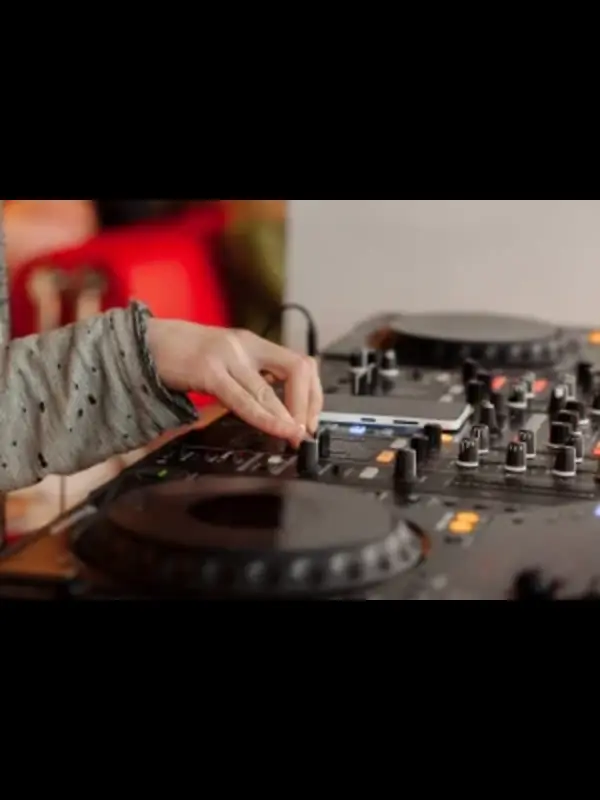33 vs 45 Vinyl (All you need to know)
Vinyl records can be play at two different speeds: 33 vs 45 Vinyl RPM (revolutions per minute). The speed at which a record is play affects the pitch and duration of the music. When a record is play at 33 RPM, it spins slower, resulting in a longer playing time for each side of the record. This speed is commonly use for full-length albums and allows for more music to be store on each side. It provides a smoother and more relaxed sound which is ideal for genres like rock, pop, and jazz.
The choice between 33 vs 45 vinyl depends on the type of music you’re listening to and your personal preference. Some audiophiles argue that 45 RPM records offer better sound quality due to the increased speed and wider grooves, while others prefer the warmth and longer playing time of 33 RPM records. It’s up to you to decide which speed suits your listening preferences and the type of music you enjoy. Both 33 and 45 RPM records have their own unique characteristics and can enhance your vinyl listening experience in different ways.
33 rpm Record Size

A 33 RPM record, also known as a 12-inch LP (long-playing) record, has a larger size compared to a 45 RPM record. It typically measures 12 inches (30 centimetres) in diameter. This larger size allows for a longer playing time per side, making it suitable for albums and extended musical compositions.
The 33 RPM record format was introduced in the late 1940s and quickly became the standard for full-length albums across various genres. These records are known for their deep grooves, which provide a higher level of detail and fidelity in the music. The slower speed of 33 RPM allows for a more accurate reproduction of the audio, resulting in a richer and more immersive listening experience.
In terms of physical appearance, 33 RPM records are typically housed in a cardboard or plastic sleeve, often featuring artwork, track listings, and additional information about the album and the artist. The record itself is made of vinyl and has a centre hole that fits onto the turntable’s spindle. It’s worth noting that some turntables have adjustable speed settings to accommodate both 33 RPM and 45 RPM records. However, it’s important to check the speed selector on your turntable to ensure compatibility with the record you want to play.
Overall, 33 RPM records have played a significant role in the history of music, allowing artists to release complete albums and explore longer musical compositions. They continue to be cherish by collectors and music enthusiasts for their larger format and the immersive listening experience they provide.
Different Sizes of Vinyl Records

Vinyl records come in various sizes to accommodate different types of music releases. The most common sizes are 7-inch, 10-inch, and 12-inch records.
The 7-inch record, also known as a “45,” is the smallest size. It typically contains one or two songs on each side and is often use for singles or promotional releases. These records are perfect for those catchy hit songs you can’t get enough of.
Moving on to the 10-inch record, it offers a bit more space than the 7-inch, allowing for longer playing times per side. This size was popular in the early days of vinyl and is still use for EPs (extended plays) or smaller releases. It’s a great choice if you want a collection of songs that go well together.
Now, let’s talk about the 12-inch record, which is the most common size for full-length albums. This size provides ample space for multiple songs on each side and offers a higher sound quality due to its larger grooves. It’s perfect for those immersive listening sessions where you want to experience an entire album from start to finish.
While the 7-inch, 10-inch, and 12-inch records are the most prevalent, there are other less common sizes as well. For example, there are 5-inch records, often used for novelty releases, and even larger sizes like the rare 16-inch radio transcription discs.
Each size has its own unique charm and purpose, catering to different musical needs and preferences. Whether you’re collecting singles, EPs, or full albums, vinyl records offer a tangible and immersive way to experience music. So go ahead, explore the different sizes and enjoy the magic of vinyl.
Conclusion
After considering the pros and cons of 33 and 45 vinyl, the final verdict is that both have their merits. The 33 vinyl allows for longer playing times per side, making it great for full-length albums and immersive listening experiences. On the other hand, the 45 vinyl is perfect for catchy hit songs and singles. Ultimately, it depends on your personal preferences and the type of music you enjoy. So, embrace the versatility and enjoy the (33 vs 45 vinyl) best of both worlds!
FAQs
When playing vinyl records, the speed at which you play them depends on the record itself. Most vinyl records are design to be play at either 33 1/3 RPM (revolutions per minute) or 45 RPM. The 33 1/3 RPM speed is commonly use for full-length albums. This speed allows for longer playing times per side, which is great for enjoying a complete album experience. The slower rotation speed also allows for deeper grooves, resulting in better sound quality.
An RPM record, or revolutions per minute record, refers to the speed at which vinyl records rotate on a turntable. The RPM indicates the number of complete revolutions the record makes in one minute. Common RPM speeds for vinyl records are 33 1/3 RPM and 45 RPM. A 33 1/3 RPM record is typically use for full-length albums, allowing for longer playing times per side. This slower speed allows for deeper grooves and better sound quality. On the other hand, a 45 RPM record is commonly use for singles or shorter releases, delivering a higher fidelity sound.
It’s important to note that not all records are design to be play at the same speed. Always check the label or packaging of the record for the recommended RPM. By selecting the appropriate speed, you can ensure the best sound quality and enjoy your vinyl collection to the fullest!







